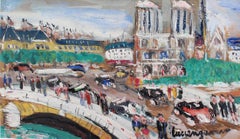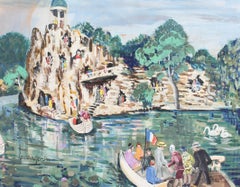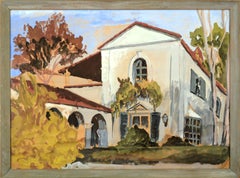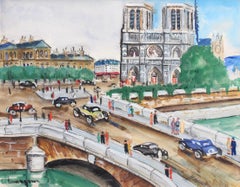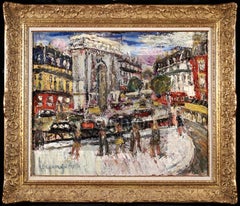Lucien Génin Art
Lucien Génin was known for his lush depictions of Paris. After the devastation of the First World War, Génin left his provincial home in the autumn of 1919 to find his fortune among the lively Parisians in the heart of Montmartre. Not concerning himself with producing art, he beautifully captured the spirit of Paris between the wars while enjoying a truly Bohemian existence. Génin's works, in all their forms, perfectly convey the eclectic and friendly characters of the city.
1930s Expressionist Lucien Génin Art
Paper, Gouache
1930s Expressionist Lucien Génin Art
Paper, Gouache
1930s Lucien Génin Art
Gouache
1930s Post-Impressionist Lucien Génin Art
Paper, Gouache
1930s Expressionist Lucien Génin Art
Paper, Gouache
1930s Expressionist Lucien Génin Art
Paper, Gouache
1930s Expressionist Lucien Génin Art
Paper, Gouache
1930s Lucien Génin Art
Paper, Oil, Gouache
1930s Lucien Génin Art
Paper, Gouache
Mid-20th Century American Impressionist Lucien Génin Art
Paper, Gouache, Cardboard
Early 1900s Post-Impressionist Lucien Génin Art
Oil
1920s Constructivist Lucien Génin Art
Paper, Gouache
21st Century and Contemporary American Impressionist Lucien Génin Art
Paper, Gouache
Mid-20th Century Expressionist Lucien Génin Art
Watercolor, Gouache, Paper
1990s Realist Lucien Génin Art
Paper, Watercolor, Gouache, Board
Early 1900s Post-Impressionist Lucien Génin Art
Oil
1910s Art Deco Lucien Génin Art
Gouache, Archival Paper, Pencil
20th Century Realist Lucien Génin Art
Paper, Watercolor, Gouache
Early 20th Century Impressionist Lucien Génin Art
Paper, Watercolor, Gouache
1990s Post-Impressionist Lucien Génin Art
Oil, Canvas
Late 20th Century Expressionist Lucien Génin Art
Paper, Watercolor, Gouache
1930s Expressionist Lucien Génin Art
Paper, Gouache
1930s Post-Impressionist Lucien Génin Art
Canvas, Oil
1930s Lucien Génin Art
Oil, Board
1930s Lucien Génin Art
Gouache
1930s Expressionist Lucien Génin Art
Paper, Gouache
1930s Post-Impressionist Lucien Génin Art
Paper, Gouache
1930s Expressionist Lucien Génin Art
Paper, Gouache
1930s Lucien Génin Art
Paper, Gouache
Early 20th Century Post-Impressionist Lucien Génin Art
Paper, Gouache
Early 20th Century Post-Impressionist Lucien Génin Art
Paper, Gouache
Early 20th Century Post-Impressionist Lucien Génin Art
Paper, Gouache
1930s Post-Impressionist Lucien Génin Art
Canvas, Oil
